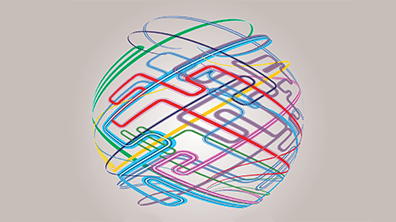Ever since ChatGPT launched in November 2022, generative artificial intelligence (Gen-AI) has seized the spotlight. It seems to be a trendy buzz-phrase or fussy tech-speak, but Gen-AI marks a steep learning curve for AI software that is set to play a more powerful role in our lives. To fully understand why its impact will be game-changing, let’s look at where AI software has come from to get here.
‘Old’ AI
Often referred to as ‘traditional’ AI, ChatGPT’s ancestors hinged on two features: a large set of specialist data fed in by programmers to form the AI’s base of ‘knowledge’, and an algorithm that would determine how the system worked.
Typically, the algorithm would explore samples of data, such as medical x-rays, financial records or speech, to spot and then act on patterns. That enabled different types of AI, as identified by the US Chamber of Commerce, to simulate key, human traits:
- Understanding This falls under a class of programs known as expert systems. Think of medical software that’s been trained to comb patients’ scans so it can diagnose diseases, or tools that detect and troubleshoot bugs in computer code. Those systems are tailored to have subject-specific insights.
- Behaviours and judgement Other types of AI are built around rules-based decision trees. Effects artists on the Lord of the Rings films used an AI called Massive to simulate battles, for example. Each computer-generated soldier was programmed with a decision tree of movements and reactions. As such, they could behave as though they were fighting each other in real time. Decision-tree software can be used in areas such as banking to rule on customers’ loan applications.
- Responses Our third, main type of older AI is natural language processing (NLP). An NLP system aims its pattern-spotting power at human language. The most common form of NLP software is the chatbot, a common feature of business websites.
What this tells us about old AI
Essentially, those types of software worked more or less like machines. As factories of data, old AIs would take in material presented to them and react to it in predetermined ways, as set out in their programming. There was nothing about those models that resembled independent creativity. Even chatbots are simply picking and choosing, albeit at impressive speed, from a pre-set matrix of possible responses.
How Gen-AI builds on old AI
Thanks to improvements in data storage and processing power, older types of AI have in the past decade or so become smarter.
In November last year, a report from industry body UK Finance noted that the stepping stone to Gen-AI was predictive AI. Equipped with a much larger bank of internal knowledge and running at faster speed, predictive AI can study bodies of data to carry out advanced analysis, spot outliers and/or forecast future scenarios. That core capability is known as machine learning.
Following more recent improvements, Gen-AI goes even further. Its functions pass for genuine intuition and initiative. As UK Finance points out, that level of performance is made possible by even bigger banks of internal knowledge called large language models (LLMs). Blending text, image and audio files from a vast array of sources, LLMs provide Gen-AI with the ability to interpret, classify and manipulate any content it touches, and to generate its own – hence the term generative.
That means it can produce content with a high degree of personal relevance to the end user, or transform one type of content into another. For example, it could turn a company staff manual into a training course with a quiz, or rework a sample of text into an image.
As such, it marks a clear break with the non-creative forms of old AI.
What does this mean for finance?
In August last year, a report from the International Monetary Fund stressed that Gen-AI will accelerate AI adoption across the finance world. It noted: “Gen-AI’s ability to process very large and diverse datasets and to generate content in accessible and easily usable formats (including conversational) is proving very useful in enhancing efficiency and improving customer experience, risk mitigation and compliance reporting.”
At the same time, Gen-AI greatly expands the universe of tasks and roles that are open to automation.
ICAEW Data Analytics and Tech Manager Bani Lamba says: “As they explore Gen-AI’s potential, users have much to think about. It’s important to note that, alongside healthy scepticism about the accuracy of Gen-AI outputs, users must have confidence in the datasets that the tools are using to produce their results. Users must also have a comfort level with the ways they interact with these models – for example, through prompts. Training will help users to build a richer understanding of how these tools work.”
Take a look at this further Insights article for details on how Gen-AI stands to disrupt finance.
Learn more from ICAEW
For a deeper dive into this topic, visit ICAEW’s Generative AI Guide.
To obtain a CPD Certificate, take the short course Introduction to Generative AI, as part of our Finance in a Digital World learning experience.
ICAEW's Generative AI Guide
Getting to grips with Gen AI
ICAEW's Finance in a Digital World is a suite of elearning modules to support members in understanding digital technologies and their impact on finance, including generative AI. Completing modules can count towards verifiable CPD hours.





